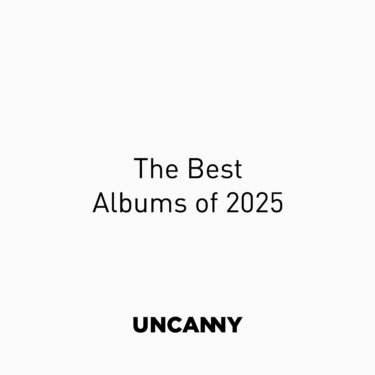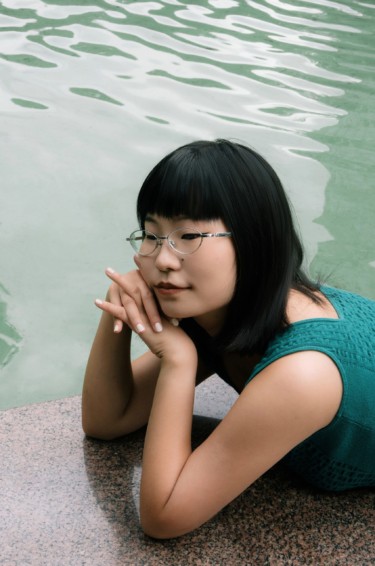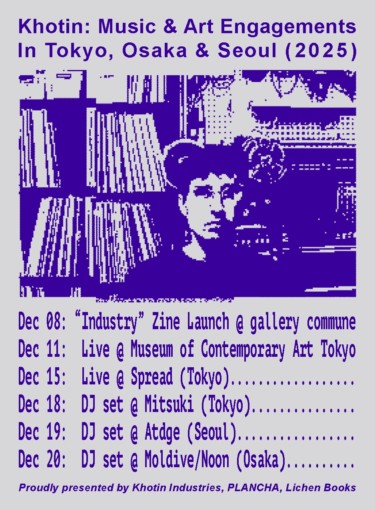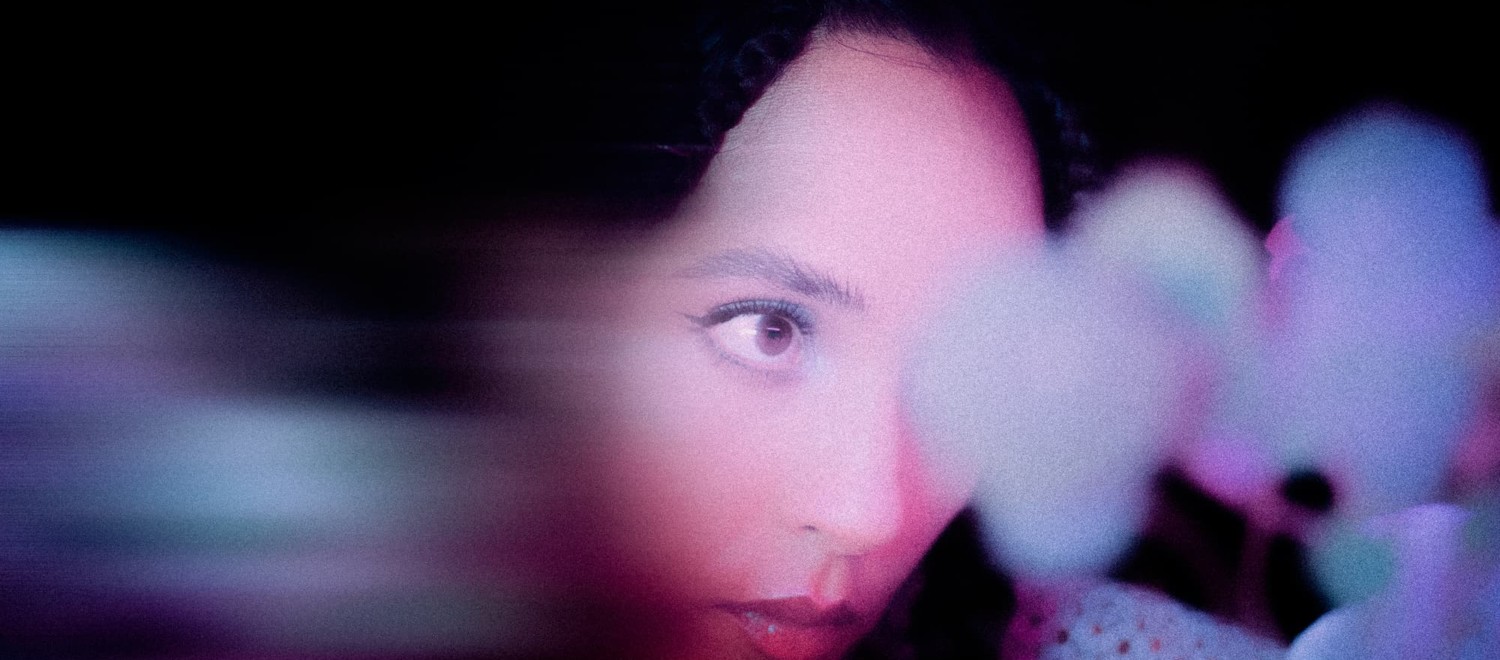
- INTERVIEWSApril/28/2023
-
[Interview]Melati ESP - “hipernatural”

ニューヨークのブルックリンを拠点に活動するYoung Magicや、多国籍音楽プロジェクトAsa Toneのメンバーとして知られる、インドネシア系アメリカ人のアーティスト、Melati Malay。今月彼女は〈Carpark〉より、Melati ESPとして、ソロ名義としてデビュー作となる『hipernatural』をリリースした。
同作で、彼女は何を作り出そうとしたのか、楽曲や制作過程の詳細と、ソロ名義での制作を行った経緯について、彼女自身の言葉で語ってもらった。
__これまで Young Magic や Asa Tone として、さまざまな作品をリリースしていますが、今回ソロアルバムを制作することになったきっかけを教えてください。
今回、自分の声をリサンプリングするという方法で、初めてインドネシア語でボーカルを録ることを試みました。これが転機になって、AIやアイデンティティをテーマにした新しいアルバムが誕生したんです。今までにない形でクリエイティブな切り口を作れたような気がしています。新たなストーリーが生まれ、アーティストとして探求したいテーマの新たな章が始まったと思いました。
それと、歌詞がインドネシア語で歌われていることもあって、このプロジェクトにこれまでのAsa Tone や Young Magic とは別の世界観を持つ新しい名前を付けるべきだと思いました。今、それぞれのプロジェクトで、音楽的アイデンティティの異なる側面を最大限に表現することができています。星座は違えど、同じ宇宙に存在するようなものですね。
__2020年に〈Leaving Records〉からリリースされたAsa Toneの『Temporary Music』は、インドネシアのジャカルタでレコーディングされた作品でしたが、今作『hipernatural』はどこでレコーディングを実施したのでしょうか。
はじめはニューヨークのブルックリンで、 Asa Tone のメンバーのKaazi、 Tristan Arp と共有していた古いスタジオで録音していました。その後、パンデミックがあって別々の国で動けない状況になったので、残りはメキシコのトラヤカパン、オーストラリアのマランビンビー、最終的にインドネシアで完成させました。
ニューヨークのスタジオや機材から離れて完成させたアルバムなので、その制約の中である意味ざっくりとしていて、遊び心にあふれた作品に仕上がったと思います。
__作品からは、自身のルーツであるジャカルタと、拠点であるニューヨークの要素が感じられますが、2つの都市にはどのような違いがあると考えていますか。
私にとって、ニューヨークとジャカルタは似ています。どちらも色彩や食べ物、文化にあふれていますが、とても動きの速い、ワイルドでカオスな巨大都市です。おもしろいのは、どちらの地域でも自分の夢に向かう新しい人生の第一歩に、こうした都市に移り住む人が多いことです。ニューヨークとジャカルタの違いよりも、似ているところを見ることの方が多いですね。
(個人的には、そのような都市のカオスに突き動かされ、自分の音楽作りは逆の方向に向かおうとするので、生活の中における音の庭のような、より質感のある音楽や少しリラックスできるクラブミュージックを作るようになりました。)
私はこう考えています。幼少期からずっとジャカルタで暮らしていたので、ジャカルタは断片的な記憶の世界、私の「潜在意識」の世界です。一方でニューヨークは、私が成人してからの人生の大半を占めていて、私の日常的で活動的な「意識的」な世界により近いものです。つまり、私が森の中の一本の木だとしたら、ジャカルタは根の部分で、アメリカは葉の部分なんです。
__アルバムタイトルの “hipernatural” は、アルバムの全体のテーマを表したものでしょうか。また、その意味を教えてください。
はい。この「自然」と「技術」の融合については、いろいろと考えを巡らせました。「不気味の谷」や “hipernatural”(インドネシア語で超自然を意味します)についても 。“hipernatural” の定義の一つは、本来存在しなかったかもしれない有機的な形態を誇張し、人工的に作り上げたものです。そこで私が疑問に思ったのは、「オーガニック」はどこで終わり、「インオーガニック」はどこから始まるのかということです。
私たちは統合されたAIによって多くの変化を迎えようとしています。 “hipernatural”は、こうしたハイブリッドな未来における人間の本質とつながりについての私の個人的な探求でもあるのです。未来がどうなっているのか探求することに興味がありました。
__プレスリリースによると、先行シングルの「E.M.Z.」は、“environmental management zone” の略称との解説がありますが、詳しく教えてください。
私は、環境と国民の幸福を常に優先させる専門の国家部門があるような、ユートピア的な近未来社会を想像していたのです。私はこれを “environmental management zone” と呼んでいます。
歌詞には「健康、雇用、教育をよい方向に向かわせる。食と住を提供する。大きな心で」とあります。現代社会で人が生き、活躍するために必要な本質的なニーズは何なのかを考えました。それでこの曲がリード曲になりました。この音楽は、ハイブリッドな未来のための環境音楽として鳴らしたかったのです。
__同じく先行シングルの「KUPU KUPU ELEKTRONIK」は、“electronic butterfly”を意味するそうですが、この曲はどのような感覚から生まれたアイデアなのでしょうか。
この曲の背景にあったアイデアは変質です。私のマインドセットを脱植民地化し、古いあり方を解き放とうとすることで、自分の人生に愛と強い希望を注入しようとするものです。環境崩壊の瀬戸際にあり、現在の地政学的な情勢を考えると、今がその時だと思います。
私はこのアルバムで、このような大きくて重いテーマを、軽くて遊び心のある高度に様式化された音楽と組み合わせることをとても楽しみました。アルバム全体を通して、この対照的な感覚を意図的に得ようとしたのです。
__「BAHASA BARU」は“新しい言語”という意味だそうですが、この曲のメッセージについて教えてください。
この曲も、再発明について歌っています。私にとって、新しい言語とはあらゆる新しいコミュニケーション方法なのです。私は音を通じて世界と交信する手段が好きで、音楽を作るときは、いつも歌詞と曲のフィーリングを通して、形と形のないものの間に存在する空間を見つけようとしています。宇宙のメッセージに触れることができればと思っているのです。
__また、NOWNESSで実妹のKathleen Malayが監督を務めたミュージックビデオが公開されていますが、映像のテーマを教えてください。
私と妹が育ったジャカルタの家の近くで、一緒に撮影できたのは素晴らしいことでした。彼女はとても才能のある監督で、ずっと一緒に仕事をしたいと思っていました。
このビデオは、他者性を所有することへの畏敬の念から作られたものです。私自身、ジャカルタで育ち、常に2つの世界の狭間で、エイリアンの子供のように感じていたにもかかわらずではありますが。「Bahasa Baru」は、第3の空間を心地よく占めること、そして直感、共感、理解に結びついた新しいコミュニケーション方法を創造することを意図した、個人的な声明なのです。
__ジャケットのアートワークを日本のデジタルアーティスト、Kazuhiro Aiharaが手がけていますが、依頼した理由を教えてください。
「自然」と「技術」の融合を伝えるアートワークを探していたんです。私は長年、 Kazuhiro Aiharaさんの作品を追いかけていました。ニューヨークから彼にメールを送ったら、デジタル空間におけるアート作品の所有権や、商業美術界のモデルの外に存在するという観点からの、アートの未来に対する彼の見解や哲学を説明する美しいメールが返ってきました。彼は新しい未来を想像していたのです。この作品は、”hipernatural”のカバーアートになるべくしてなった、という思いが強くなりました。
__今後のリリースやツアーの予定などがあったら教えてください。
はい、どちらも予定があります。最近、バリ島のフェスティバルで初めてショーを行ったのですが、とても楽しいものでした。ステージ上に特注のコクーンポッドを作り、布製の触手を浮かべて、そこにインドネシアのアーティストのLoreng Projecktが作ったビジュアルを投影しました。このプロダクションで、今年の後半にツアーを行う予定です。
公演をするなら、日本は世界で最も好きな場所の一つなので、このツアーの一環として、ぜひまた訪れたいですね。
You have released various works, such as Young Magic and Asa Tone. How did you come up with the idea of making a solo album at this time?
I decided to start recording vocals in Indonesian for the first time, using a new technique of resampling my own voice. This marked the turning point for a new album theme about artificial intelligence and identity. I felt like I was able to open up creatively in a new way; I had new stories to tell and it felt like a new chapter in the themes I wanted to explore artistically.
Also, because the lyrics are sung in Indonesian, I felt it was right to give this project a new name, so that it could live in its own world, separate from my previous work in Asa Tone and Young Magic. Now each music project allows me to express a different side of musical identity to the maximum potential. They may be different constellations, but they all exist in the same universe.
Your “Temporary Music” as Asa Tone, released in 2020 on Leaving Records, was recorded in Jakarta, Indonesia. So where was the recording location for this new album?
The beginning of the album was recorded in Brooklyn, New York in my old studio space I used to share with Kaazi and Tristan Arp from Asa Tone. Then the pandemic happened and we all became stuck in different countries, so the rest of the album was finished between Tlayacapan in Mexico, Mullumbimby in Australia and finally in Indonesia.
Because I was away from my studio, and my gear in New York when finishing the album, the limitations pushed me to be less precious in some ways, and freed me up to be playful.
We can feel some elements of Jakarta, your roots, and New York, where you have your base from your works. What do you think are the differences between those two cities?
New York and Jakarta are similar to me. They both are full of color, food and culture, but are both very fast moving, wild, chaotic megacities. I think what is interesting is that many people in both regions move to these types of cities to begin on a new life path that aligns with their dreams. I guess I often see the similarities between New York and Jakarta, more so than the differences.
(Personally, the chaos of those cities encourages me to try and move the opposite way in my music making, so that I tend to make more textural music, even slightly relaxing club music, to help act as a kind of sound garden for my life.)
I think of it like this. I lived in Jakarta throughout my childhood, so it is a world of fragmented memories – my “subconscious” world. New York has been most of my adult life, which is closer to my daily, active “conscious” world. So, If I am just a tree in the forest, then Jakarta is the roots and American is the leaves.
Does the album title “hipernatural” stand for the overall theme? Also, could you tell us the meaning of the title?
Yes. I was thinking a lot about this merging of “nature” and “technology.” Also this state of the “uncanny valley” or “hipernatural” (which means hypernatural in Indonesian). One definition of hipernatural is an exaggerated, artificial version of an organic form that may have not originally existed. So my question was, where does the “organic” end, and the “in-organic” begin?
We are on the verge of many changes with integrated A.I, and hipernatural is my personal exploration into human nature and connection within these hybrid futures. I was curious about exploring what the future might look like.
According to the press release, the “E.M.Z.” in the leading single is an abbreviation for “environmental management zone.” Could you please provide more details about this?
I was imagining a utopian near-future society, where there is a dedicated state department that makes sure the well-being of the environment and its citizens are a priority at all times. I call this the “environmental management zone.”
The lyrics are “health, employment, education, turn it around. We will provide food and shelter. A big heart.” I was thinking about what the essential needs are of people to live and to thrive in a modern society. So this became a theme song. I wanted this music to sound like the environmental music for this hybrid future.
And likewise, according to the press release, the preceding single, “KUPU KUPU ELEKTRONIK,” means “electronic butterfly.” So what was the idea behind this song?
This idea is metamorphosis. It is about decolonizing my mindset, and trying to unlearn old ways of being, with the hope to inject my life with some love and a stubborn hopefulness. On the brink of environmental collapse, and the current geopolitical climate, now is the moment.
On this album, I really enjoyed pairing these often bigger, heavy subject matters, with light, playful, highly stylized music. I was purposefully trying to get this contrasting feeling across the whole album.
Also, you said “BAHASA BARU” means “new language.” Could you tell us about the message of this song?
This song is also about reinvention. For me, a new language can be any new way of communication. My favorite way to communicate with the world is through sound. When I am making music, I am always trying to find this space through the lyrics and the song’s feeling, that exists on the cusp between the form and the formless. I hope to be in touch with the message of the universe.
The music video of “BAHASA BARU,” directed by your sister, Kathleen Malay, has been released on NOWNESS. What is the theme of this video?
It was so great to shoot this video in Jakarta with my sister, close to the house where we both grew up. She is such a talented director and I have always wanted to work with her.
This video was made in reverence to owning otherness, despite mostly feeling like a baby alien while growing up in Jakarta, always between two worlds. Bahasa Baru is a personal statement of intent; being comfortable in occupying the third space, and creating new ways of communicating that are tethered to intuition, empathy and understanding.
The cover artwork is by Japanese digital artist Kazuhiro Aihara. What were your reasons for appointing him?
I was looking for artwork that conveyed this merging of “nature” and “technology.” I have been a longtime follower of Kazuhiro Aihara’s work. I emailed Kazuhiro from New York, and he wrote back a beautiful email explaining his views about the future of art and his philosophy, in terms of ownership of artwork in the digital space, and existing outside the models of the commercial art world. He was imagining new futures. This solidified my feeling that this artwork was meant to be the cover of hipernatural.
Do you have any plans for future releases or tours?
Yes, both! I recently played my first show at a festival in Bali and had so much fun! We built a custom cocoon pod onstage, with floating fabric tentacles, and projected onto it with the visuals made by Indonesian artist Loreng Projeckt. I plan to tour this production later in the year.
Japan is one of my favorite places in the world to perform, so I would love to visit Japan again as part of this tour.
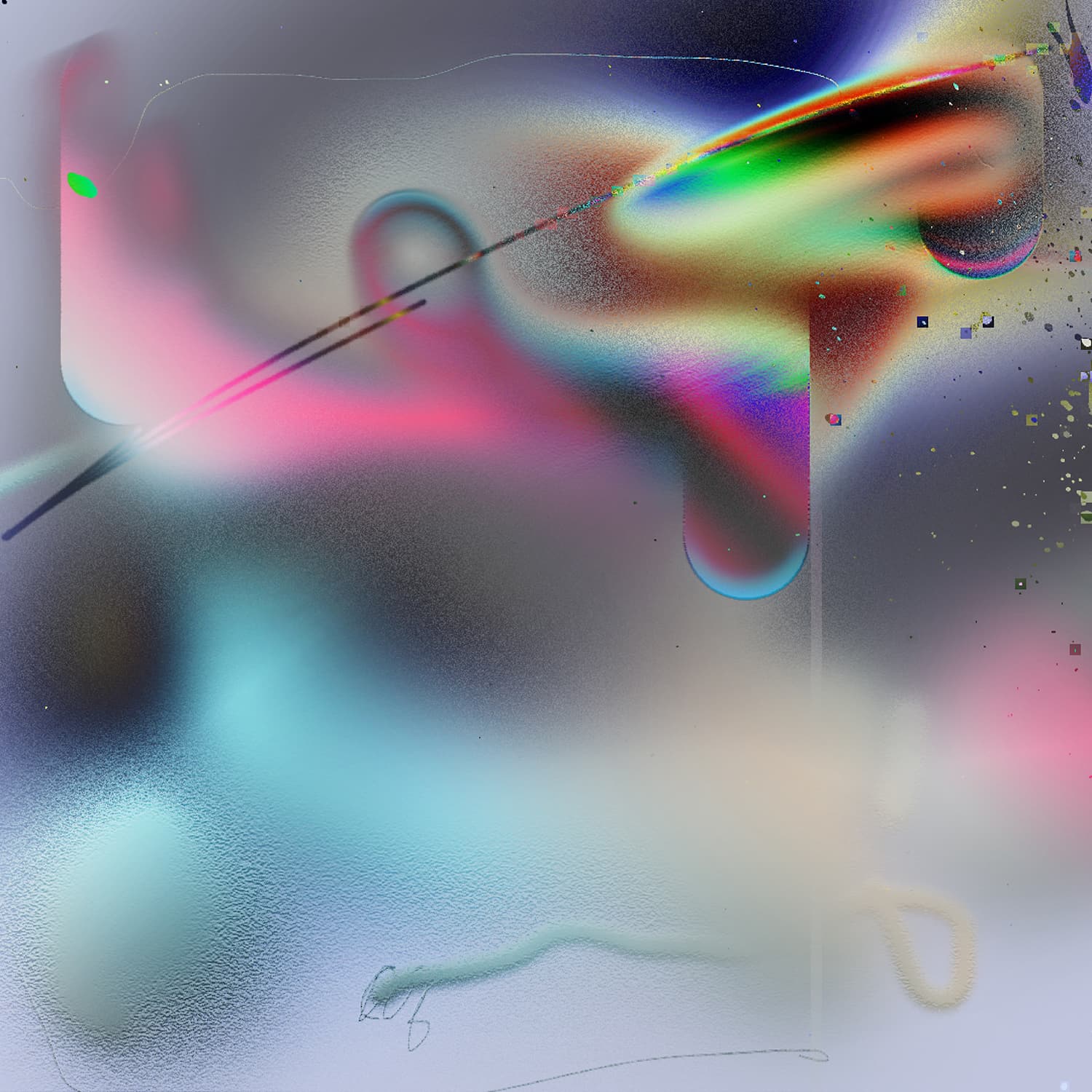
hipernatural:
01. TEPI MEMORI
02. BAHASA BARU
03. E.M.Z.
04. SPESIMEN SEMPURNA
05. INTUISI
06. KUPU KUPU ELEKTRONIK
07. DI ATAS
08. ITU CUKUP!
09. ANDA KATAKAN
10. KITA VS MEREKA
11. WANITA
12. ENERGI
13. KITA VS MEREKA (Salamanda Remix) *
14. ANDA KATAKAN (Tristan Arp Remix) *
15. BAHASA BARU (Kaazi’s Hyperspace Edit) *
*=日本盤CDボーナス・トラック
Cover by Kazuhiro Aihara
Produced, written and recorded by Melati ESP & Kaazi
Mixed by Tristan Arp (except track 3 mixed by Steve Nalepa)
Additional production on 5, 6, 7, 8 by Tristan Arp
Mastered by Christopher Botta at Fer Sound
Photo by Marlee Pasinetti
編集:東海林修(UNCANNY)
![[Interview]Melati ESP - “hipernatural”|UNCANNY](https://uncannyzine.com/wp-content/themes/uncanny_v6/common/images/logo.svg)

